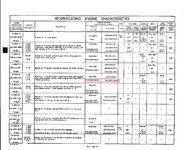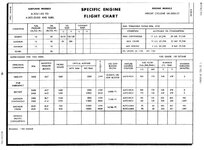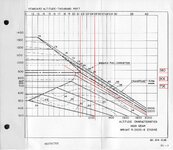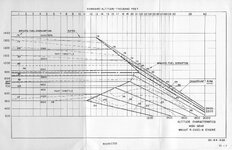Simon Thomas
Senior Airman
Does anyone have a copy of the performance curve for the Wright GR2600A5B fitted to the Short Stirling?
I am hoping to compare the performance curves of that and the Hercules XI.
In the book "Short Stirling, The First of the RAF Heavy Bombers", Pino Lombardi writes
However, Hercules engine production was accelerated to meet demands, and when three aircraft - N3657, N3711, and R9188 - were fitted with Wright Cyclone engines at Swindon, performance and fuel consumption trials to assess performance and fuel consumption produced disappointing results.
Mikec was kind enough to post the Wright Cyclone 14 Model C14A manual, which had some information including a curve for the GR2600A2A but unfortunately not a curve of the GR2600A5B. Wright R-2600-8-9-13 Hand Book of Orperating Maintenance Instructions
I have attached some information from that manual. The difference between the A2A and the A5B is the two speed supercharger and 90 vs 95 octane.
For reference, I have also attached the some information from the Bristol Hercules XI including the M and S performance curves.
Edit: stage/speed screwup fixed.
I am hoping to compare the performance curves of that and the Hercules XI.
In the book "Short Stirling, The First of the RAF Heavy Bombers", Pino Lombardi writes
However, Hercules engine production was accelerated to meet demands, and when three aircraft - N3657, N3711, and R9188 - were fitted with Wright Cyclone engines at Swindon, performance and fuel consumption trials to assess performance and fuel consumption produced disappointing results.
Mikec was kind enough to post the Wright Cyclone 14 Model C14A manual, which had some information including a curve for the GR2600A2A but unfortunately not a curve of the GR2600A5B. Wright R-2600-8-9-13 Hand Book of Orperating Maintenance Instructions
I have attached some information from that manual. The difference between the A2A and the A5B is the two speed supercharger and 90 vs 95 octane.
For reference, I have also attached the some information from the Bristol Hercules XI including the M and S performance curves.
Edit: stage/speed screwup fixed.
Attachments
Last edited:





